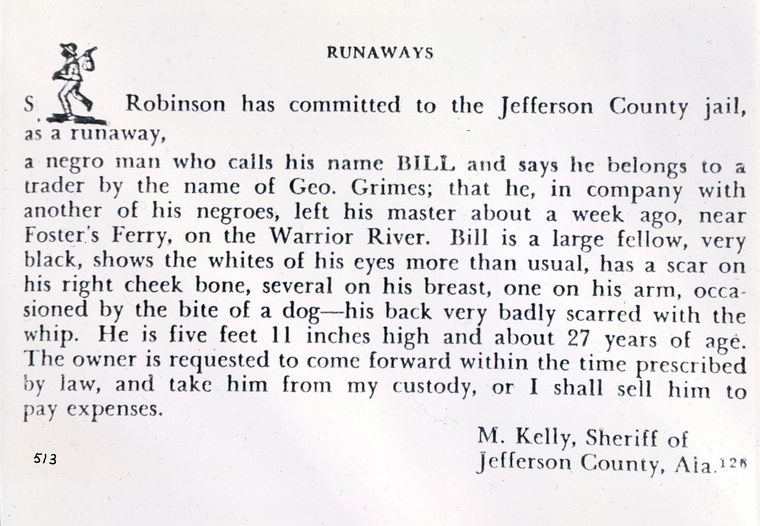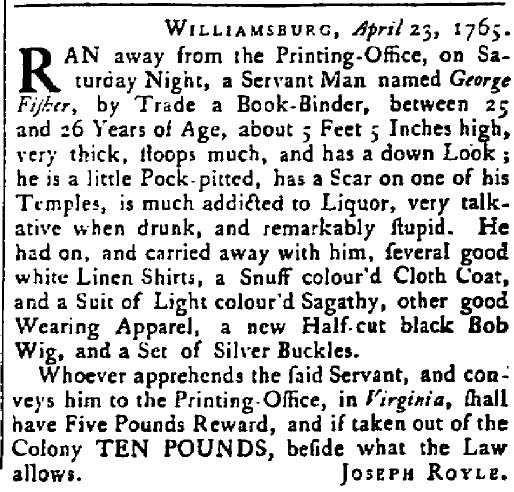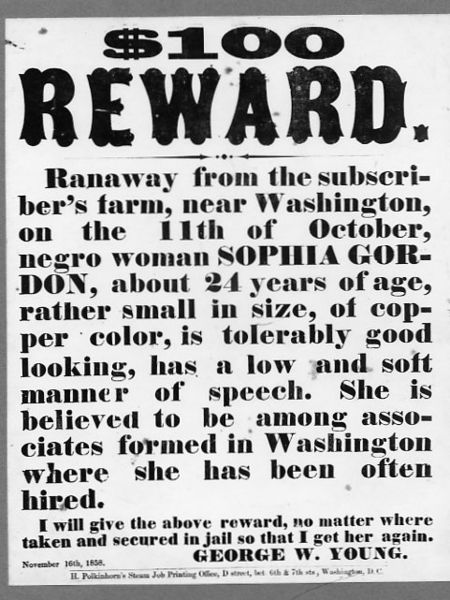About six months ago I wrote a blog post about former American slaves trying desperately to locate family members who had been lost to them through sales to other owners. Take a moment to think about that, about never again seeing a parent, child or other loved one because, as a piece of property, they had been sold. After the Civil War, these former slaves began posting notices in newspapers requesting information about those they had lost. These advertisements have been collected, creating a great source for research.
And now another type of newspaper advertisement connected to American slavery is being collected. They are also a great source for research, although the cause is not as sympathetic. Cornell University is developing an interactive and collaborative database to combine all of the runaway slave ads. These are newspaper ads or flyers giving information about fugitive slaves, often offering a reward for their return. The descriptions of the runaway slaves often tell you everything you need to know about how owners viewed their property.
The Freedom On The Move project estimates that there are more than 100,000 ads that have survived. These ads will be entered into a database so that the information included can be used not only for general research, but for detailed analyses of all aspects of these ads, including geography, rewards and gender.
This project will use crowdsourcing, so it is an opportunity for history classes and the general public to get involved in generating a database that will be a valuable research tool. If you would like to get involved, their website suggests you contact Ed Baptist at eeb36@cornell.edu.

Advertisement in a newspaper for a runaway slave named Bill, who had been captured and turned over to the Jefferson County Jail. Photo via Wikimedia Commons
***The Freedom on the Move website shows an ad for a runaway slave, placed by Thomas Jefferson. Yes, I know the argument that he was a man of his time, but there were also abolitionists in his time.



Horrifying. The language of the ads is definitely revealing, as you say.
I wish there was some way to know how many of those runaway slaves actually made it to freedom. I would like to think the courage of those who tried to escape was rewarded.
Thanks for sharing.
Cathy